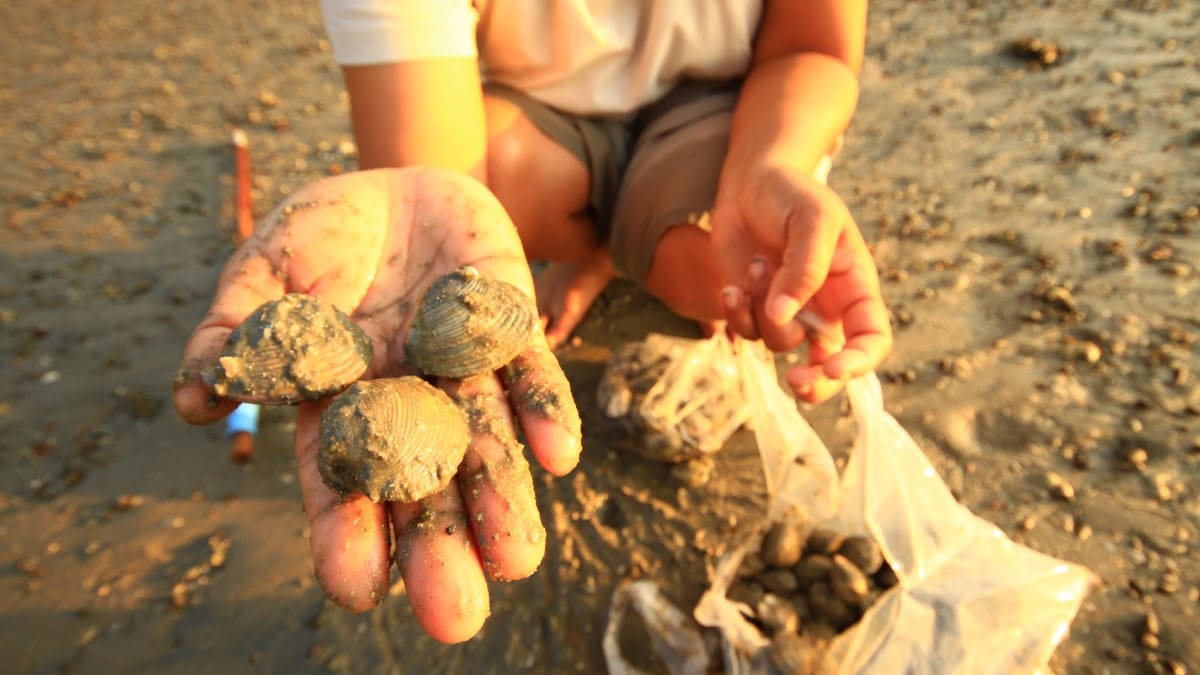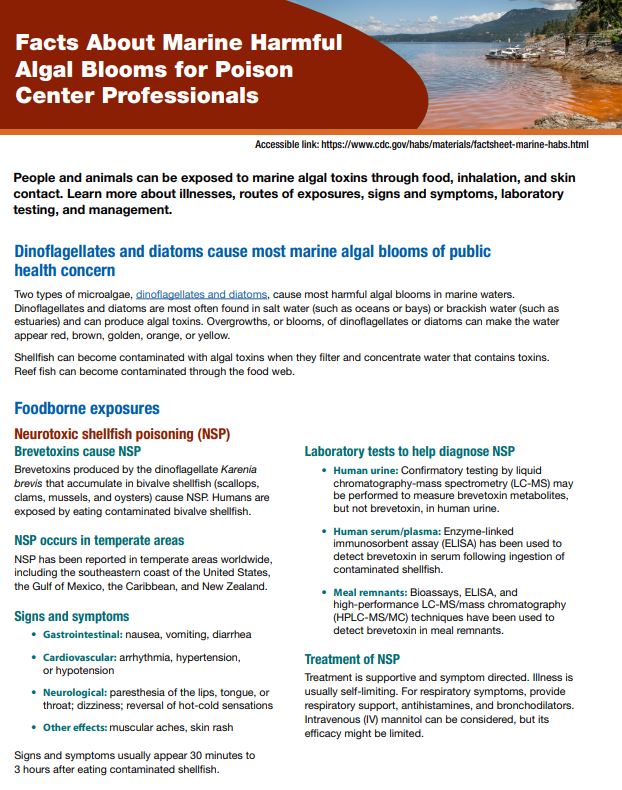Key points
- Testing may help you diagnose foodborne illnesses caused by harmful algal bloom toxins.
- Specialized laboratories may be able to test human samples for some types of toxins.
- If the seafood your patient ate is still available, contact FDA about testing it for toxins.
- Report cases to your health department.

Testing
Laboratory tests performed by specialized labs may help you diagnose the following foodborne illnesses caused by harmful algal blooms.
Neurotoxic shellfish poisoning
Consider testing for brevetoxin if your patient:
- Has gastrointestinal, cardiovascular, neurologic, or other symptoms consistent with neurotoxic shellfish poisoning
- Ate bivalve shellfish (such as scallops, clams, mussels, or oysters) from a temperate area
Tests
Laboratories may be able to measure brevetoxin metabolites, but not brevetoxin, in human urine using confirmatory testing by liquid chromatography-mass spectrometry (LC-MS).
Enzyme-linked immunosorbent assay (ELISA) has been used to detect brevetoxin in human serum following ingestion of contaminated shellfish.
Bioassays, ELISA, and high-performance LC-MS/mass chromatography (HPLC-MS/MC) techniques have been used to detect brevetoxin in food samples.
Ciguatera poisoning
Consider testing for ciguatoxins if your patient:
- Has gastrointestinal, neurologic, respiratory, or other symptoms consistent with ciguatera poisoning
- Ate tropical reef fish (such as barracuda, grouper, red snapper, or amberjack)
Tests
Routine laboratory test results for people with ciguatera poisoning might reflect the effects of fluid loss, such as elevated BUN and creatinine. Muscle tissue breakdown can result in mild elevation of creatinine phosphokinase (CPK) and lactate dehydrogenase (LDH).
A rapid qualitative immunoassay is available to detect ciguatoxin in fish samples.
Amnesic shellfish poisoning
Consider testing for domoic acid if your patient:
- Has gastrointestinal, cardiovascular, neurologic, or respiratory symptoms consistent with amnesic shellfish poisoning
- Ate bivalve shellfish from a temperate area
Tests
Laboratories can test human urine for domoic acid.
Laboratories can test food samples for domoic acid using bioassays, ELISA, and chromatographic techniques.
Diarrhetic shellfish poisoning
Consider testing for okadaic acid, dinophysistoxins, or pectenotoxins if your patient:
- Has gastrointestinal or generalized symptoms consistent with diarrhetic shellfish poisoning
- Ate bivalve shellfish
Tests
No test is available for human samples.
Biologic and HPLC tests can measure okadaic acid, dinophysistoxins, and pectenotoxins in shellfish samples.
Paralytic shellfish poisoning
Consider testing for saxitoxins or tetrodotoxin if your patient:
- Has gastrointestinal, cardiovascular, neurologic, or respiratory symptoms consistent with paralytic shellfish poisoning
- Ate seafood from a temperate area
Tests
For tetrodotoxin, laboratories can use urine or blood clinical specimens with HPLC. Urine HPLC can be used for testing up to 5 days after exposure.
For saxitoxins, laboratories can analyze urine specimens with LC-MS, or use ELISA in whole blood sample.
Laboratories can confirm the presence of toxins in food samples using bioassay, ELISA, cell receptor assay, HPLC-FL, or LC-MS.
Azaspiracid shellfish poisoning
Consider testing for azaspiracid toxins if your patient:
- Has gastrointestinal or generalized symptoms consistent with azaspiracid shellfish poisoning
- Ate bivalve shellfish from Europe or Japan
Tests
Laboratories can use biologic and HPLC tests to confirm the presence of azaspiracid toxins in contaminated shellfish.
Reporting cases
Contact your local or state health department to report a harmful algal bloom-associated illness.
ICD-10-CM codes
You can use the following codes to record your diagnosis of harmful algal bloom-associated illnesses:
- T65.82 Toxic effect harmful algae and algae toxins
- Z77.121 Contact with and (suspected) exposure to harmful algae and algae toxins
Resources
- Food Poisoning from Marine Toxins | CDC Yellow Book
- Distribution of Harmful Algal Blooms in the U.S. | Woods Hole Oceanographic Institution
- How to Report Seafood-Related Toxin and Scombrotoxin Fish Poisoning Illnesses | FDA

